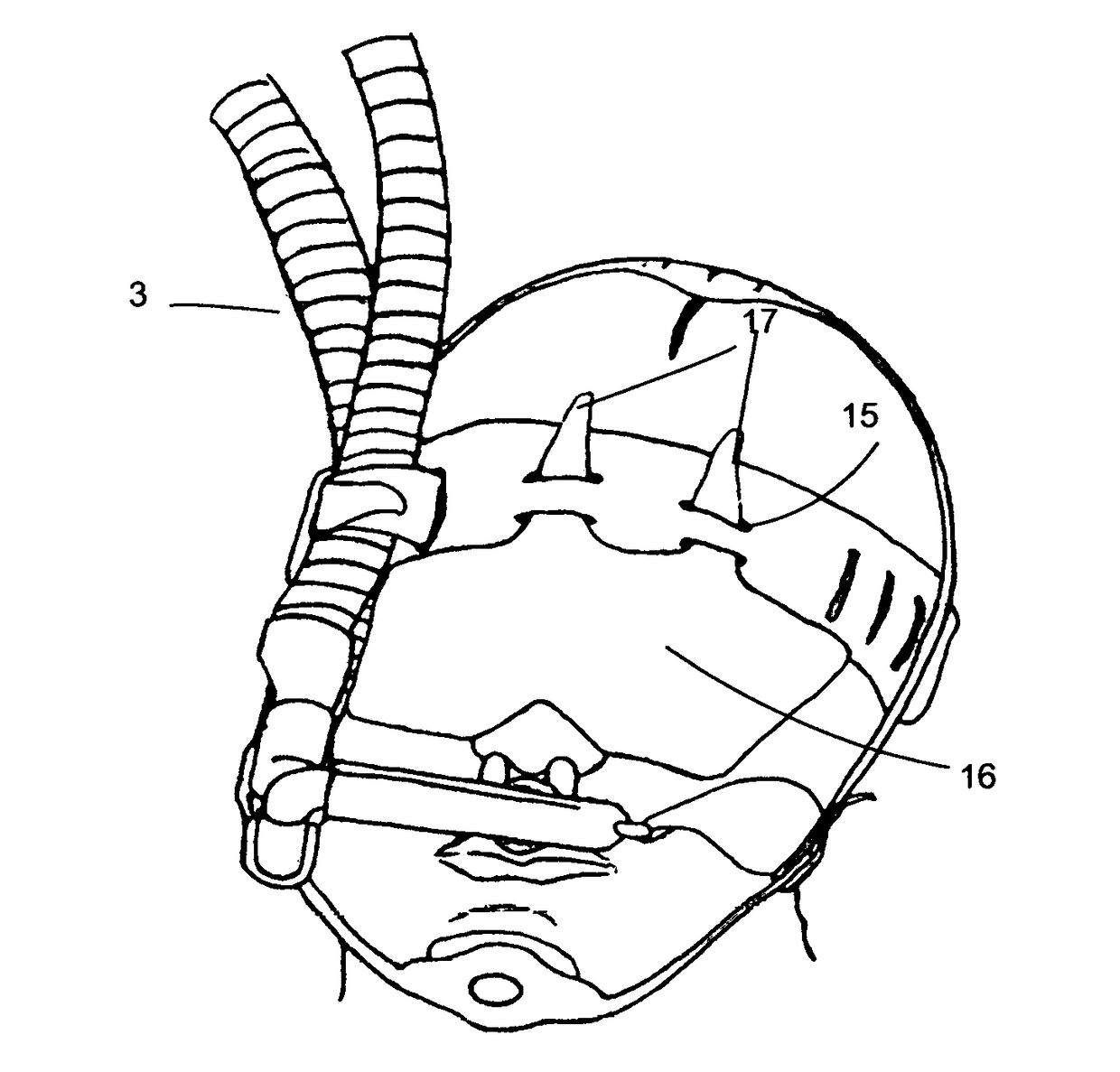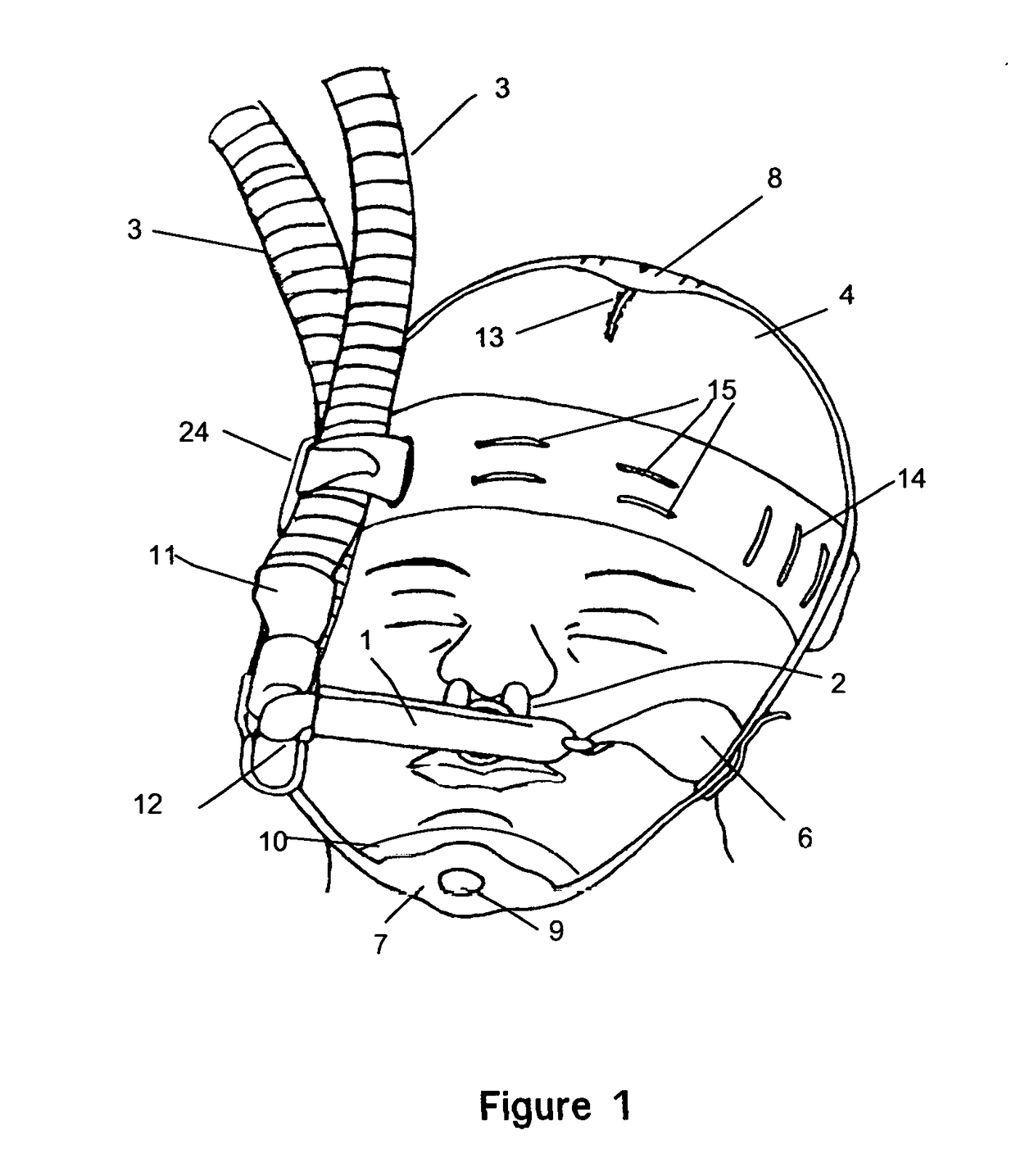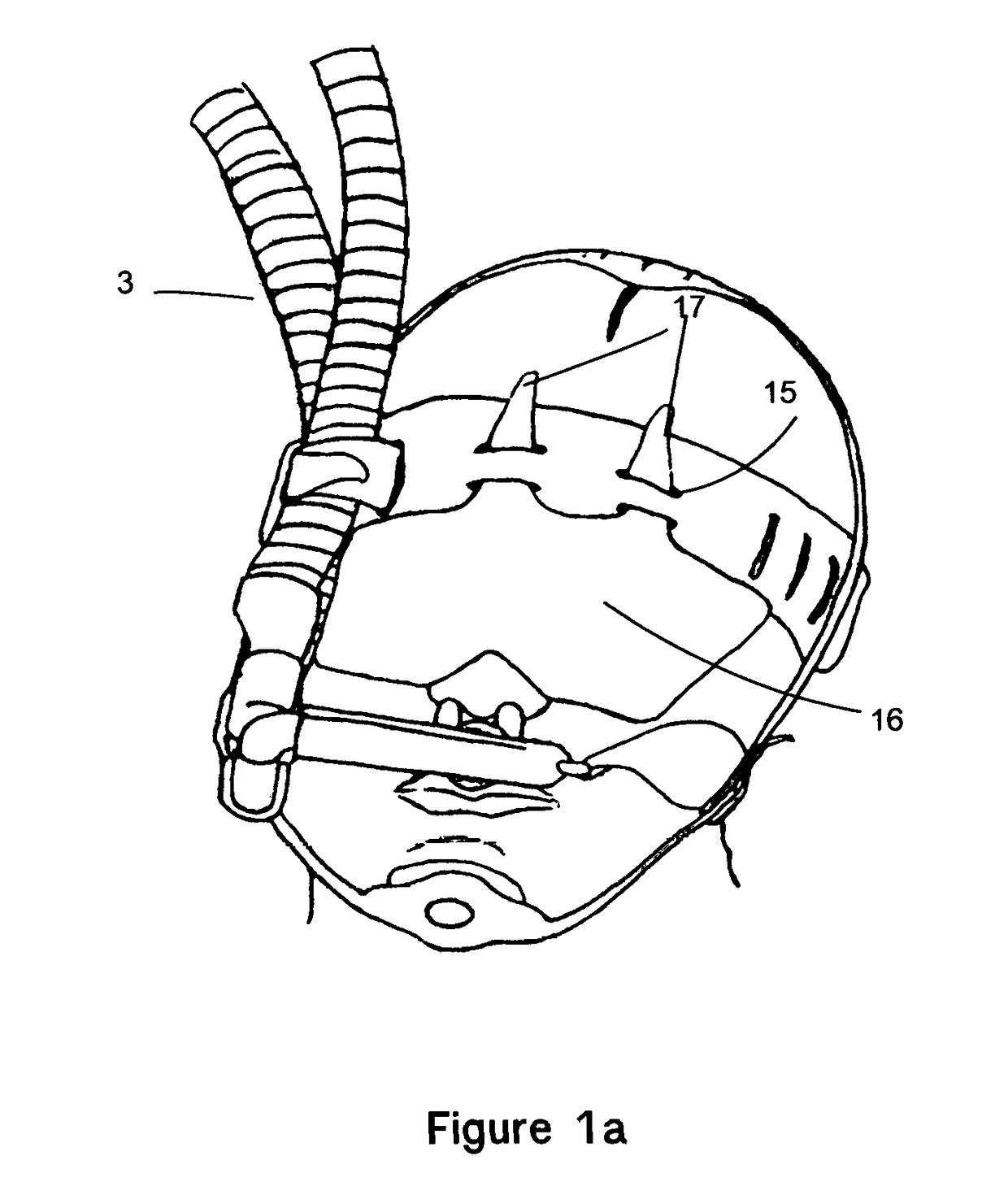NICU CPAP Cannula 360 Circuitry Support System
a circuit support system and cannula technology, applied in the field of cannula circuit support systems, can solve the problems of not being able to deliver the correct amount of oxygen to the lungs, lack of expandability from micro-premature children to full-term child growth, and posing safety problems for nurses and patients
- Summary
- Abstract
- Description
- Claims
- Application Information
AI Technical Summary
Benefits of technology
Problems solved by technology
Method used
Image
Examples
Embodiment Construction
[0051]Referring now to the drawings, FIG. 1 is the front perspective view off the invention and the circuitry support system invention on the infant patient. This view shows the insertion of the nasal prongs 2 of the invention into the nasal cavity of the infant and the attachment of two circuitry hoses 3 secured to the cap 4 with elastic and hook and loop type fastener straps 27 or 30. The opposing side of the cannula 1 is secured to the patient's cheek with a DUODERM strap 6. This view also shows the chin strap 7 attached to a crown strap 8, using hook and loop type fastener straps 18 and 19 see, FIG. 7. In this view a small hook and loop type fastener button 9 is shown in the center of the chin strap. The hook and loop type fastener button 9 secures to a DUODERM chin patch 20 with an opposing hook and loop type fastener button 1. see FIG. 9. Hoses 3 are connected to a hose adapters 11 and elbows 12.
[0052]A long slot 13 in the top of the cap 4 allows a doctor to perform a palpable...
PUM
 Login to View More
Login to View More Abstract
Description
Claims
Application Information
 Login to View More
Login to View More - R&D
- Intellectual Property
- Life Sciences
- Materials
- Tech Scout
- Unparalleled Data Quality
- Higher Quality Content
- 60% Fewer Hallucinations
Browse by: Latest US Patents, China's latest patents, Technical Efficacy Thesaurus, Application Domain, Technology Topic, Popular Technical Reports.
© 2025 PatSnap. All rights reserved.Legal|Privacy policy|Modern Slavery Act Transparency Statement|Sitemap|About US| Contact US: help@patsnap.com



